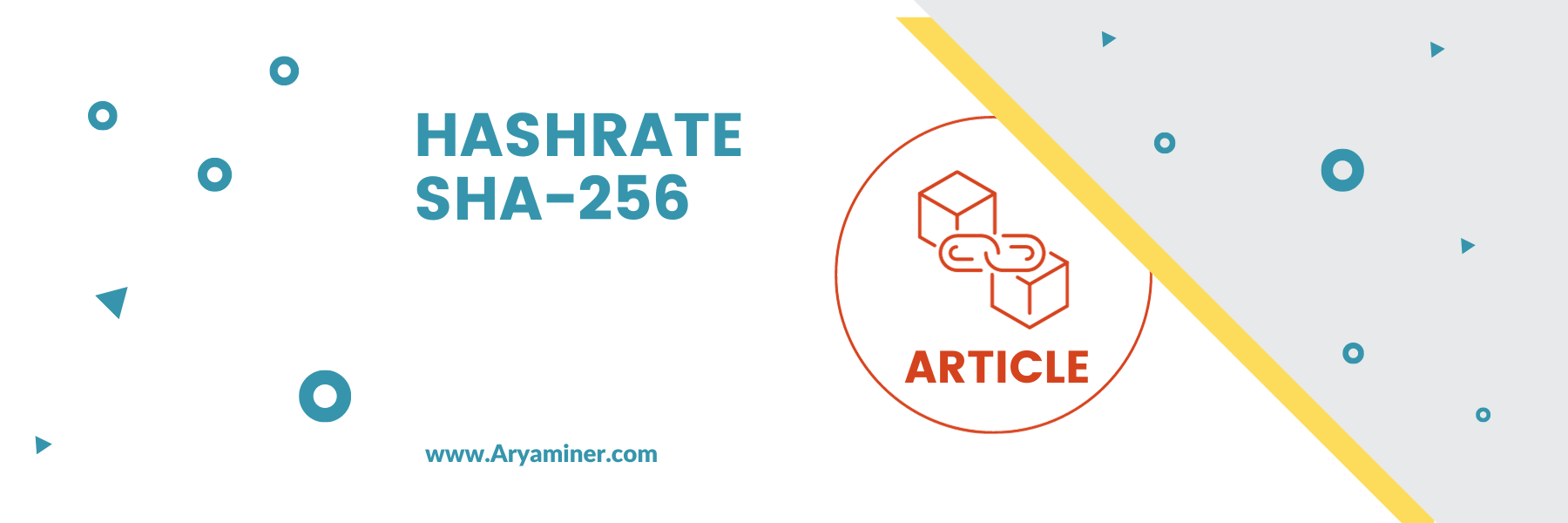
Bitcoin Mining Hashrate and SHA-256
Demystifying Bitcoin Mining Hashrate and the Robust SHA-256 Algorithm"
Introduction:
In the ever-evolving landscape of cryptocurrencies, Bitcoin reigns supreme. At the heart of this digital gold rush lies an intriguing concept: Bitcoin mining. Central to this process are two critical components that underpin the security and functionality of the Bitcoin network – hashrate and the SHA-256 algorithm. In this comprehensive article, we will unravel the mysteries surrounding Bitcoin mining hashrate and delve deep into the inner workings of the SHA-256 algorithm.

Understanding Bitcoin Mining Hashrate
What Is Bitcoin Mining Hashrate?
Bitcoin mining hashrate refers to the computational power or processing speed of the Bitcoin network. It quantifies the collective effort of worldwide miners competing to solve complex mathematical puzzles and validate transactions on the blockchain.
Measurement Units of Hashrate:
- Hashes per Second (H/s): The basic unit of hashrate, representing the number of hash calculations performed in one second. While H/s is the smallest unit, Bitcoin mining operates at a much higher scale.
- Terahashes per Second (TH/s): One terahash per second equals one trillion hashes per second. This standard measurement unit describes the combined computational power of mining pools and large-scale mining farms.
Significance of Hashrate:
- Security: A high hashrate enhances the network's security by making it exponentially more difficult for malicious actors to alter transaction records or double-spend Bitcoins.
- Blockchain Consensus: Bitcoin's consensus mechanism relies on miners' hashrate to achieve agreement on the validity of transactions and the addition of new blocks to the blockchain.
- Halving Impact: The hashrate influences the Bitcoin Halving events, where mining rewards are reduced. As the hashrate increases, mining difficulty adjusts to maintain a 10-minute block time.
- Hashrate Measurement: Hashrate is typically measured in hashes per second (H/s), kilohashes per second (KH/s), megahashes per second (MH/s), gigahashes per second (GH/s), terahashes per second (TH/s), or even petahashes per second (PH/s). One hash represents a single calculation attempt.
For example:
- 1 KH/s = 1,000 hashes per second
- 1 MH/s = 1,000,000 hashes per second
- 1 GH/s = 1,000,000,000 hashes per second
- 1 TH/s = 1,000,000,000,000 hashes per second
Miners with higher hashrates have a better chance of solving the proof-of-work puzzle and receiving the block reward (currently 6.25 BTC, but it decreases over time through a process called "halving"). As a result, miners often seek to increase their hashrates by using more powerful and specialized hardware like ASIC (Application-Specific Integrated Circuit) miners.
Explore more about the Bitcoin mining process, Bitcoin miner shop, and ASIC miner shop on Aryaminer's website.
- What's Bitcoin Mining Process: Discover the intricacies of Bitcoin mining.
- Bitcoin Miner Shop: Explore top-of-the-line Bitcoin mining hardware.
- ASIC Miner Shop: Find the latest ASIC miners for efficient cryptocurrency mining.

Deep Dive into SHA-256 Algorithm
What Is the SHA-256 Algorithm?
SHA-256, short for "Secure Hash Algorithm 256-bit," is a cryptographic hash function that plays a central role in Bitcoin mining and many other security applications.
Critical Properties of SHA-256:
- 256-Bit Output: SHA-256 produces a fixed-size 256-bit (32-byte) hash value.
- Deterministic: SHA-256 will always produce the same hash output for the same input.
- Collision Resistance: Finding two different inputs that produce the same SHA-256 hash (a collision) is computationally infeasible.
Applications of SHA-256:
- Cryptocurrency Mining: SHA-256 is the foundation of Bitcoin's proof-of-work algorithm. Miners compete to find an SHA-256 hash value that meets specific criteria to add a new block to the blockchain.
- Data Integrity: SHA-256 is used to verify data integrity during transmission and storage.
- Password Storage: It secures password storage by storing hash values instead of actual passwords.
- Blockchain Security: SHA-256 is crucial for creating the cryptographic links between blocks in blockchain technology.
- Digital Signatures: It plays a vital role in digital signatures to ensure document authenticity.
The Symbiotic Relationship
Bitcoin mining hashrate and the SHA-256 algorithm share a symbiotic relationship. Miners use the SHA-256 algorithm to compete for block rewards, and the network's hashrate ensures the algorithm's security. Together, they form the backbone of the Bitcoin network, enabling trustless transactions and decentralization.
Conclusion
In Bitcoin and cryptocurrencies, mining hashrate and the SHA-256 algorithm are the twin pillars sustaining the network's integrity and functionality. The hashrate represents the collective computational might of miners, while the SHA-256 algorithm safeguards data and ensures consensus. Together, they drive the world's leading cryptocurrency forward, forging a path toward a decentralized and secure digital economy.
Featured collection
Antminer S19J PRO 104Th
Antminer S19j Pro by Bitmain – 104TH/s High-Performance Bitcoin Mining The Antminer S19j Pro (104TH) delivers more hashing power for serious miners...
View full detailsAntminer S19
Antminer S19 – Efficient & Reliable Bitcoin Miner Built by Bitmain | HashRate: 82TH/s – 95TH/s | Energy Efficient The Antminer S19 from Bitmain...
View full detailsAntminer S19J PRO
Antminer S19j Pro by Bitmain – 100TH/s Reliable and Efficient Bitcoin Mining The Antminer S19j Pro from Bitmain offers a solid 100TH/s hashrate, ma...
View full detailsAntminer S19K PRO
Antminer S19k Pro by Bitmain High-performance SHA-256 miner – 115TH/s & 120TH/s The Antminer S19k Pro is a powerful Bitcoin mining device from ...
View full detailsAntminer S19 Pro
Antminer S19 Pro – Powerful & Efficient SHA-256 Mining The Antminer S19 Pro by Bitmain is a high-end ASIC miner designed for serious Bitcoin an...
View full details









Leave a comment